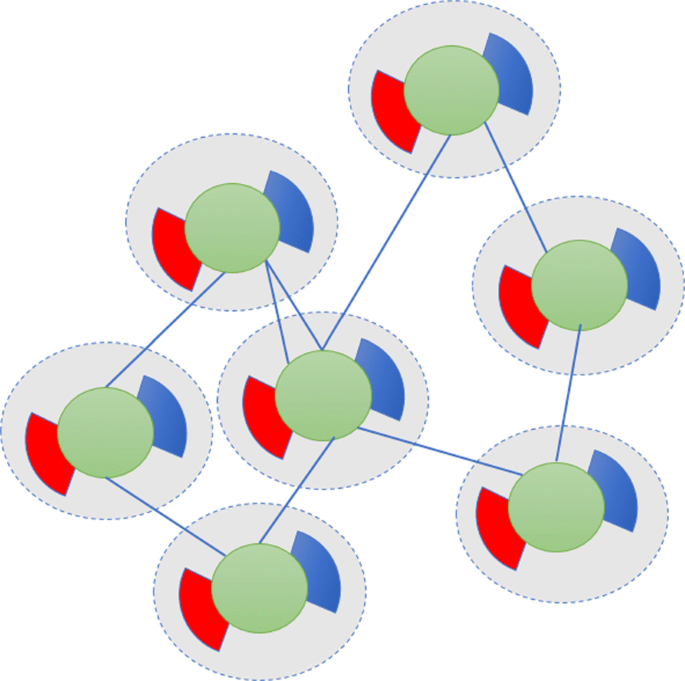Is the Web Structure Still Bow-Tie?
The Bow-Tie model of the web structure discussed in class was proposed by Broder et al. in a 2000 paper. [1] It models the websites and pages in the World Wide Web as a bow-tie structure with most pages in either IN, OUT, or the SCC component. SCC represents a large strongly connected component where most websites are directed to each other; IN represents pages that direct to pages in the SCC; OUT represents pages that are directed by pages in the SCC. The model implies that most websites in WWW talk about similar topics and share similar information so that they make reference to and connect with other websites frequently. Given the rapid development of the internet after the 2000s, is the web structure still a bow-tie? Based on recent studies, the answer is an ambiguous no”: it is not, at least, the typical bow-tie we are familiar with.

Fujita et al. indicated in a 2019 paper that based on the analysis of recently collected web datasets, the major component of the bow-tie web structure is actually not strongly connected. Rather, it is a large weakly connected component with numerous small local bow-tie structures. [2] The following graph illustrates the small bow-ties in the largest component of the web structure. Each of the small bow-ties qualitatively represents a small web community and the center of the small bow-tie represents some densly-connected websites that have authority and popularity of that specific community. There are weak local bridges between the small bow-ties.
The local bow-tie structure seems to make more sense than the original overall bow-tie structure in the current web world. Nowadays, most web communities, forums, and wbesites only focus on specific topics (such as politics, foreign cultures, etc.) that have loyal users and that interact with few other websites. According to the discussion of connected components in class, if the main component of the web is strongly connected, then those websites in the main component sholud be able to reach any other websites and their users should be able to flow among different websites. But the phenomenon of the echoing chamber these days indictaes that the web users are actually fixed to some web communities rather than moving around. Therefore, it makes more sense that the main component of the web is weakly connected with various strongly connected subcomponents that focus on specific topics with specific attitudes.
Why is the web structure not a bow-tie with a strongly connected major component? One of the possible explanations is that the users of internet have exponentially increased across all backgrounds of people. In the 2000s, only a small portion of people were able to maintain computers and browse websites and those people were mostly educated, middel-class, and technical. Therefore, their interests and attitudes towards life, society, and polictis might be similar, so that a strongly connected component was possible at that time. As the computers and laptops are more accessible now, the users of web become more diverse right now and then it is natural for WWW to divide into various small but strong interest groups and communities that do not necessarily need to interact too much with other communities.
Another explanation is the popularity of mobile devices than PCs since the 2010s. A 2008 paper by Jindal et al. pointed out that the mobile web structure is “sparser, more disconnected, and less concentrated in the SCC components” than the traditional bow-tie structure of the static WWW. [3] This might be caused by the decentralized nature of mobile web: because users spend a shorter timespan on mobile devices to browse the internet content than on PCs, mobile web content is designed to be easier to easier to digest quickly and to only focus a few topics to attract the specific users. Therefore, a normal mobile user will only browse a few web contents because he/she does not have the time to glance over all topics on a comprehensive index page like Yahoo or Google, and the resulting mobile web structure is naturally more decentralized and segmented.
Is such a new bow-tie web structure better than the typical one? If we pay more attention to the strongly connected small bow-ties, we can say yes because more users can find interest groups and make friends of the same interest online even for very rare interests. However, if we look at the weak connections between those bow-ties, we might say no because web users are less willing to communicate with people in other interest groups and are more polarized, which is harmful for a healthy civic society. Related this back to the echoing chambers I have discussed in the previous blog post, I do believe this is something web designers need to reflect on and be concerned about.
Citation: [1] “Graph Structure in the Web.” Broder et al. Computer Networks. 2000.
[2] “Local Bow-tie Structure of the Web.” Fujita et al. Applied Network Science. 2019.
[3] “The Mobile Web Is Structurally Different.” Jindal et al. IEEE INFOCOM Workshops. 2008
